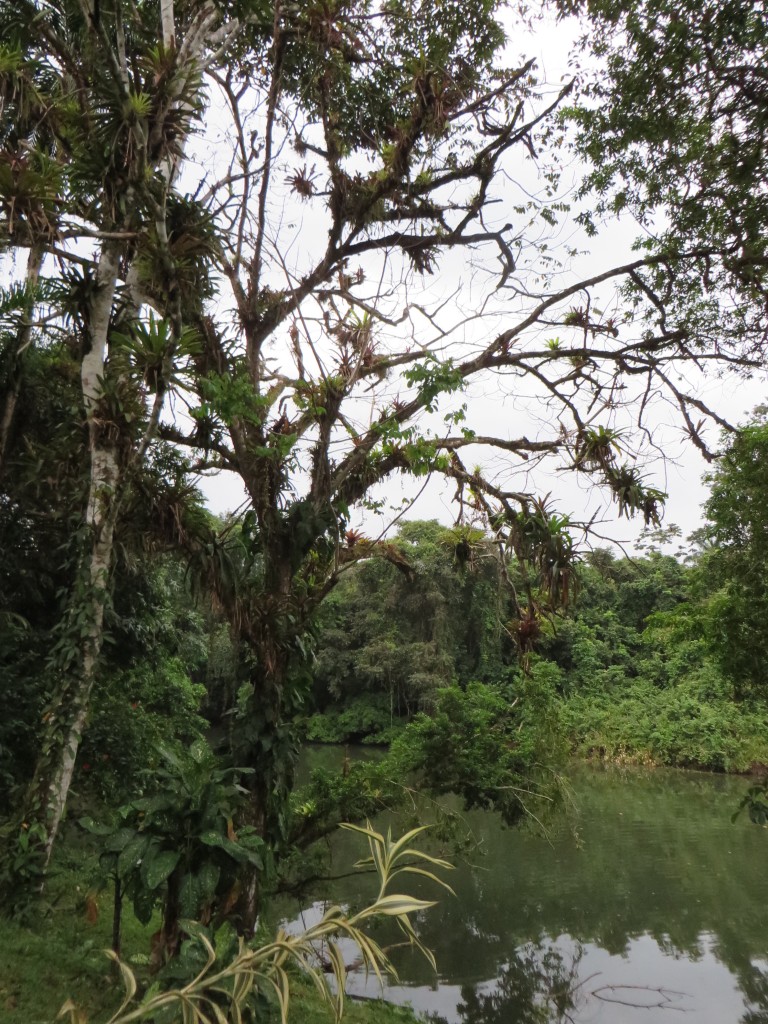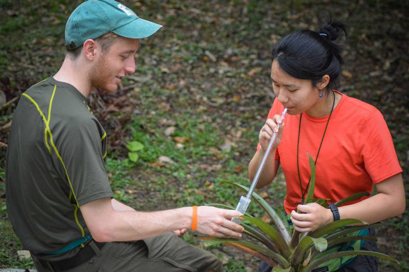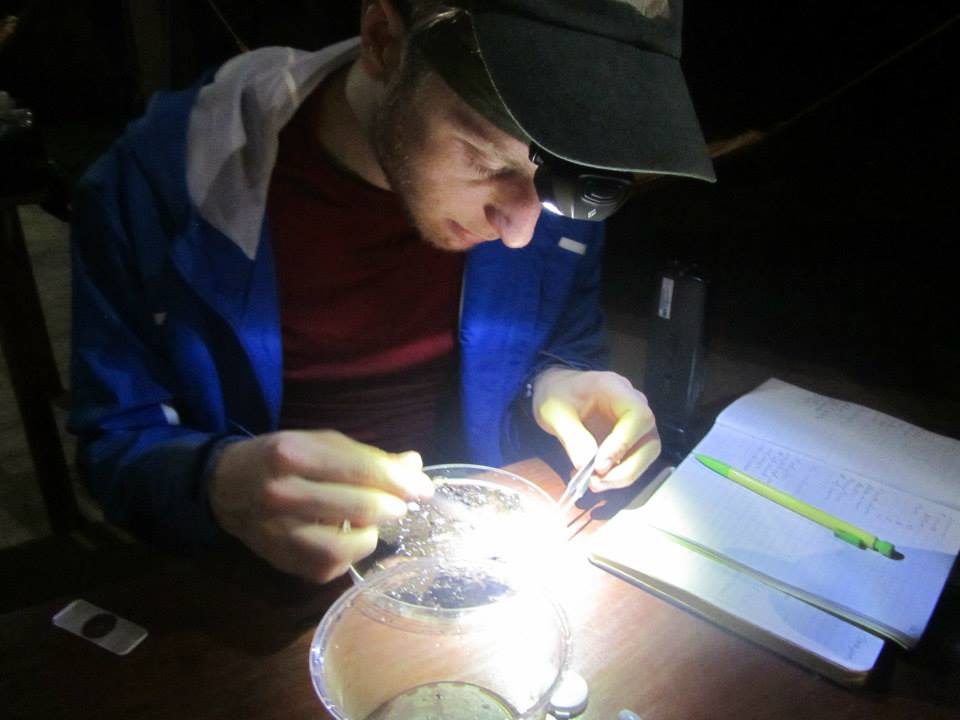
Bromeliads belong to a family of plants native to the Neotropics. Some species of bromeliad are epiphytes, meaning that they grow on other plants similar to lichen or moss. Several species of bromeliad have a center rosette that can trap pools of water—known as a phytotelma. These species are commonly referred to as tank bromeliads. As one would expect in streams or other bodies of water, bromeliad phytotelma are a valuable resource for many animals, especially aquatic and semi-aquatic macroinvertebrates, which often rely on perennial water bodies to reach maturity or even remain in aqueous environments for their entire lives.
Bromeliads remain understudied and even less is known about the communities they host. While it has been shown that the type of forest cover above a stream can have an impact on the invertebrates that live in them, this principle has not been thoroughly addressed for bromeliads. We were interested in how the amount of canopy closure above a bromeliad could affect the diversity and abundance of invertebrates within their phytotelma. We looked at bromeliads between areas of closed canopy cover and areas in the open, where light could more easily permeate the canopy tops. We predicted that bromeliads on trees in open areas would have significantly less invertebrates within their phytotelma than bromeliads from within the forest due to the likely linkage between canopy cover and water permanence. We assumed that with less water due to a difference in cover, these phytotelmata communities would be more vulnerable to desiccation (a process by which animals dry up and perish).

Pictured above, we collected data from the bromeliads by removing the liquid and soil contained in the phytotelma and sorting invertebrates found within. We collected a total of 299 invertebrates from 20 bromeliads, half from closed canopy cover and the other half from open areas. As we predicted, bromeliads under more canopy cover contained more water, soil, and most importantly, had greater abundance and diversity in their invertebrate communities.
The future of Nicaraguan tropical rainforest is marked with discontent due to the increased prevalence of selective logging, a process where the largest trees within a forest stand are removed for their timber as an alternative to clear-cut logging. It has been shown that the removal of trees within a forest leads to changes in local humidity and temperature that can result in a reduction in the presence and diversity of bromeliads. Similarly, by removing trees from a forest, area on which bromeliads can grow is lessened. Our study shows that not only does selective logging have an effect on bromeliad communities within tropical forests, but also on the communities that reside within them. It is apparent that in order to protect these centers of biodiversity, we must seriously consider the impacts of global forestry practices.
We’d like to thank our professors and TAs for their advice and assistance in the field. We would also like to thank the staff at Refugio Bartola for all of their hard work, our fellow FBQers for positivity, and our friends and family at home for their continued support. Finally, we’d like to thank the bromeliads and macroinvertebrates that were integral to our study.

